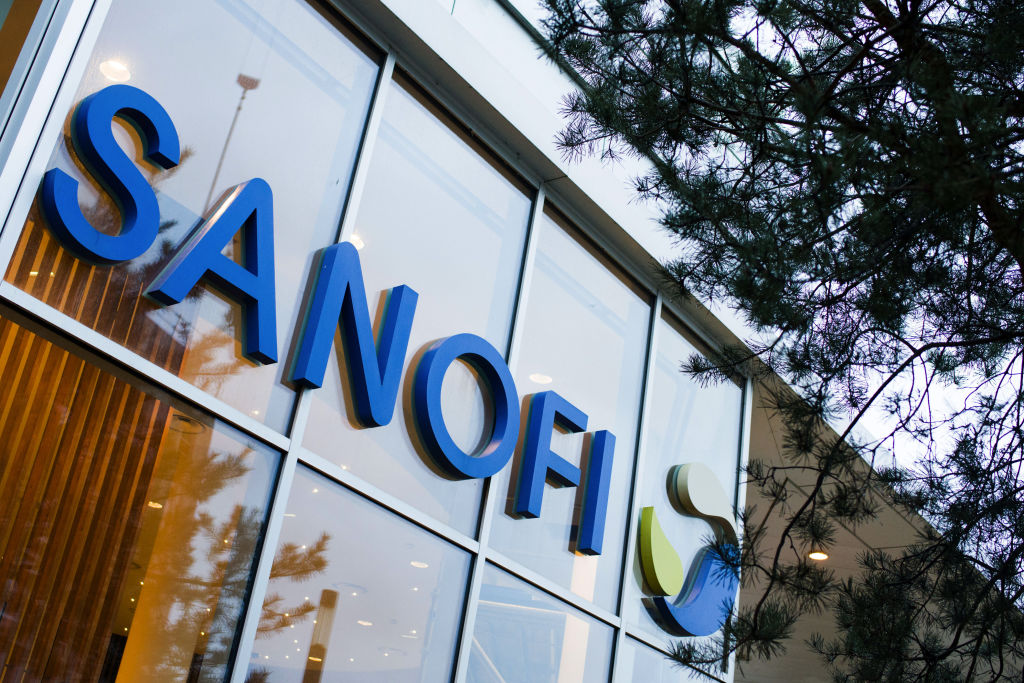
Inflammation that develops in chronic obstructive pulmonary disorder stems from different causes. A new regulatory decision in Europe makes Sanofi and Regeneron Pharmaceuticals drug Dupixent the first biologic therapy approved for COPD driven by one particular type of inflammation.
The European Medicines Agency (EMA) has approved Dupixent for adults with uncontrolled COPD that is also characterized by raised blood levels of eosinophils, a type of white blood cell. COPD patients typically take multiple medications to manage the chronic condition. The new Dupixent approval, announced just prior to the Independence Day holiday in the U.S., covers use of the injectable drug as an add-on maintenance treatment for patients whose COPD is uncontrolled by available therapies. The regulatory decision also covers patients for whom an inhaled corticosteroid is not appropriate.
Unlike some anti-inflammatory drugs, Dupixent does not suppress the immune system. The drug is an antibody designed to block IL-4 and IL-13, signaling proteins in two pathways associated with inflammation. Since its initial approval in 2017 in atopic dermatitis, the drug has received approvals in additional immunological indications, including asthma. Despite approval in that respiratory disorder, there were doubts about the drug’s prospects in COPD due to the failure of other biologics in the disease, Paul Rowe, Sanofi’s head of medical affairs specialty care North America, said in an interview ahead of the EMA decision. An AstraZeneca asthma drug, the antibody marketed as Fasenra, failed two COPD Phase 3 tests in 2018. Later that year, GSK announced the FDA rejected its antibody drug Nucala as a treatment for COPD. Nucala was initially approved for treating asthma.
Earlier in his career, Rowe worked at Forest Laboratories, which developed roflumilast, approved by the FDA for COPD in 2011. Until this year, that drug, marketed as Daliresp, represented the last innovation in COPD treatment, bringing patients an oral drug that blocks the PDE-4 enzyme to counteract inflammation. The alternatives for patients have been new combinations of older inhaled therapies. Rowe, who joined Sanofi about nine years ago to build up the company’s respiratory research, said clinicians’ approach to COPD for years has been to hand patients an inhaler, shake their hands and wish them luck.
“This is a disease state where people are dying, there haven’t been those innovations,” Rowe said. “An inhaler and a handshake is something that has gone on for more than a decade.”
In COPD, Dupixent addresses type 2 inflammation, which is an overactive immune response that leads to elevated levels of eosinophils. A decade ago, the science of type 2 inflammation was not as well understood, and it was not clearly associated with COPD, Rowe said. Subsequent research, including studies by Regeneron, found that this type of inflammation plays a role in COPD.
The EMA approval is based on the results of two Phase 3 clinical trials. These double blind, placebo-controlled studies evaluated the drug in 1,874 current or former smokers with moderate-to-severe COPD with evidence of type 2 inflammation. The main goal was to measure the annualized rate of exacerbations, flareups of the disease that lead to worsening symptoms that can require hospitalization. Results showed the drug, administered as a subcutaneous injection every two weeks for 52 weeks, reduced exacerbations by 30% or greater. Over the duration of the study, the drug also led to better lung function and quality of life. Full results from both studies were published separately in the New England Journal of Medicine.
European approval of Dupixent is the second approval of a COPD drug in the span of a week. On June 26, Verona Pharma won FDA approval of Ohtuvayre, an inhaled drug that inhibits the enzymes PDE-3 and PDE-4. Additional competition could come from Amgen and AstraZeneca, whose antibody drug Tezspire is in mid-stage clinical development in the lung disorder. Tezspire already competes with Dupixent in asthma.
The FDA is still reviewing the Dupixent application in COPD. A decision was initially expected by late June. But at the end of May, the agency told Sanofi and Regeneron it needed more time to review the additional clinical data it had requested. The new target date for a decision is Sept. 27.
Dupixent is Sanofi’s top-selling product. Across all of its approved indications, the drug accounted for more than €10.7 billion (about $11.6 billion) in global revenue last year, according to Sanofi’s annual report. CEO Paul Hudson has set a goal for Sanofi to become a leader in immunology. The opportunity for Dupixent across multiple immunological indications is a key part of that strategy, Rowe said. Late-stage clinical trials for Dupixent are underway that could support expansion of the drug’s approval to several inflammatory skin disorders. Data are expected in the second half of this year for Phase 3 tests in chronic spontaneous urticaria, bullous pemphigoid, and chronic pruritus of unknown origin.
“What we’re seeing and learning is type 2 inflammation plays a role in a lot of diseases that we didn’t think of 10 years ago,” Rowe said.
Photo: Nathan Laine/Bloomberg, via Getty Images





